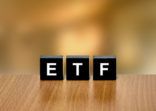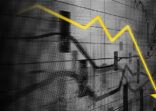According to a Morningstar report that looked at onshore China funds, during the trailing 12-months to 30 June, only 40.8% of active funds beat the passive composite index.
The report focuses on China-domiciled, actively managed broadly diversified stock-heavy funds (or China stock-heavy funds), including funds in the equity, Shanghai-Hong Kong-Shenzhen equity, and aggressive-allocation categories.
For one-, three- and five-year periods to end June 2019, less than half of actively-managed China equity funds have survived and outperformed the average passive peer fund category, the report said.

The research firm said both active and passive onshore funds together numbered 1099 in mid-2019, with a total AUM of $197.3bn.
The report also found that in the longer-term, the picture is different. For the trailing ten-year period, 70.8% of active managers survived and outperformed their average passive peer. Yet very few investors in Asia would keep their capital in a fund for ten years.
However, active stock-heavy funds have higher survivorship rates relative to passive funds, the report said.
“The survivorship rate for active funds was above 97% in all the periods we studied. Meanwhile, just 80% to 94% of passive funds survived during the same period, down from 88% to 100% in midyear 2018.
“Passive funds have generally experienced more difficulty raising assets, which has led to higher transformation and liquidation rates.”
Nonetheless, Morningstar concluded that investors have a better chance for the best returns by choosing above-average passive funds “as passive funds’ asset-weighted performance exceeded their equal-weighted performance during the trailing one-, three-, five-, and 10-year periods we examined”.
Globally, S&P’s Spiva reports found a similar outperformance of passive over active funds, over multiple periods.
In the latest data to December 2018, 79% of US active funds underperformed the S&P 500 for the trailing three years. For three- and five-year periods, in several regions globally, the vast majority of active funds underperformed benchmark indices.
Moreover, in the US, earlier this year, passive fund assets exceeded the assets in active funds for the first time.

















